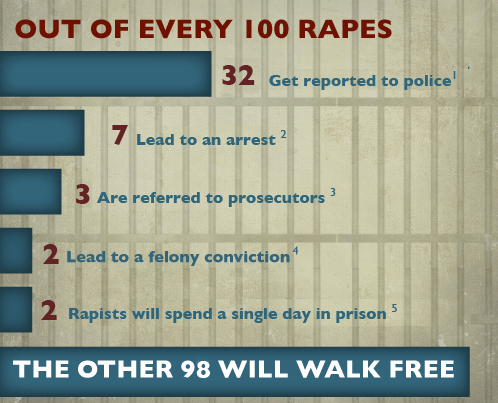Changing the Gender-Violence Culture
"We hope that the symposium can help put a very serious problem in a perspective that doesn't demonize men in general and does recognize that there have been undeniable improvements in male-female relationships."
"Noting that the rate has been decreasing is not the same as claiming that sexual violence and coercion are not serious and extensive problems."
"In many places and settings there is still an unacceptably high level of violence against women [and] there are some men who take advantage of women's new freedom of movement and action, using it as an opportunity or excuse for rape or other exploitative behaviour."
"On campuses this often takes the form of having sex with a woman who is clearly incapacitated -- or actively working to incapacitate her."
"While none of these papers offers definitive answers to the complex and multi-faceted issues involved in understanding and preventing inter-personal violence, we hope that the information they provide and the need they demonstrate for more reliable data-gathering [will help]."
Stephanie Coontz, director of research and education, Council on Contemporary Families, U.S.
 |
| Canadian Women's Foundation |
Academics across the United States have contributed to a new American analysis through a collection of papers from the Council on Contemporary Families, an organization sharing academic research on families with the public to complete a National Crime Victimization Survey which concludes that similar to the diminishing of the overall crime rate, instances of intimate partner violence have been in decline in the last two decades nationwide. Similarly, the finding is that rape and forcible sexual assaults have also been in decline since the 1970s.
Many, receiving this information scoff at its conclusions, at the very least view it with a healthy dose of skepticism, given the recent revelations emanating from Britain, from the United States and Canada of high-profile celebrities being involved in sexual predation and violence against women and children related to sexual proclivities Those who are knowledgeable about the universality and prevalence of intimate partner violence and the seemingly growing incidence of male predation even among the young of high school and post-secondary age point out that many such incidents are simply not reported.
 |
|
Police-reported sexual assault in Canada too has been seen to have declined by four percent in 2013. The decline was among those sexual assaults reported to police falling into the category of "Level 1" (Level 1 involves minor physical injuries or no injuries to the victim), while reports of aggravated sexual assault [level 3] rose by nine percent between 2012 and 2013. Of sexual assaults committed against Canadians over the age of 15, according to a document produced by Statistics Canada, 88 percent are not reported to police.
Six percent of Canadian women self-reported sexual assault in 2009 according to StatsCan's General Social Survey on Victimization, thought of as the best self-reported source government has available in tracking this type of abuse. In the United States, as in Canada, campus sexual assault remains a serious issue with between 14 percent and 25 percent of college women having been forcibly raped or assaulted. Another analysis revealed alarmingly that women not in higher education are more at risk; 21 percent of non-college-educated women suffer domestic violence in comparison to 13 percent in university.
Yet the conclusion reached by the survey results indicates that violence between married and common-law American couples has declined, even while the papers continue to consider sexual assault prevalence remains a serious problem. The government of Ontario's #WhoWillYouHelp bystander public-service campaign has helped to highlight a campaign of awareness of sexual exploitation, emphasizing that it's everyone's business to be involved in combating the societal menace that it represents.
The research also spotlights the obvious, that in lower-income, lower-education communities a higher "tolerance for violence" exists, with a concomitant slower shift toward progressive ideas of what constitutes masculinity. Economic stress is also pointed out, predictably, as a major concern, along with the fact that there are few societal institutional supports to combat intimate violence. It is hoped, however, that the release of the data "will generate a more nuanced discussion of sexual violence", stated Stephanie Coontz, acknowledged as one of the top family historians in the U.S.


Labels: Canada, Gender Inequality, Sexual Predation, Social Dysfunction, United States, Violence

0 Comments:
Post a Comment
<< Home